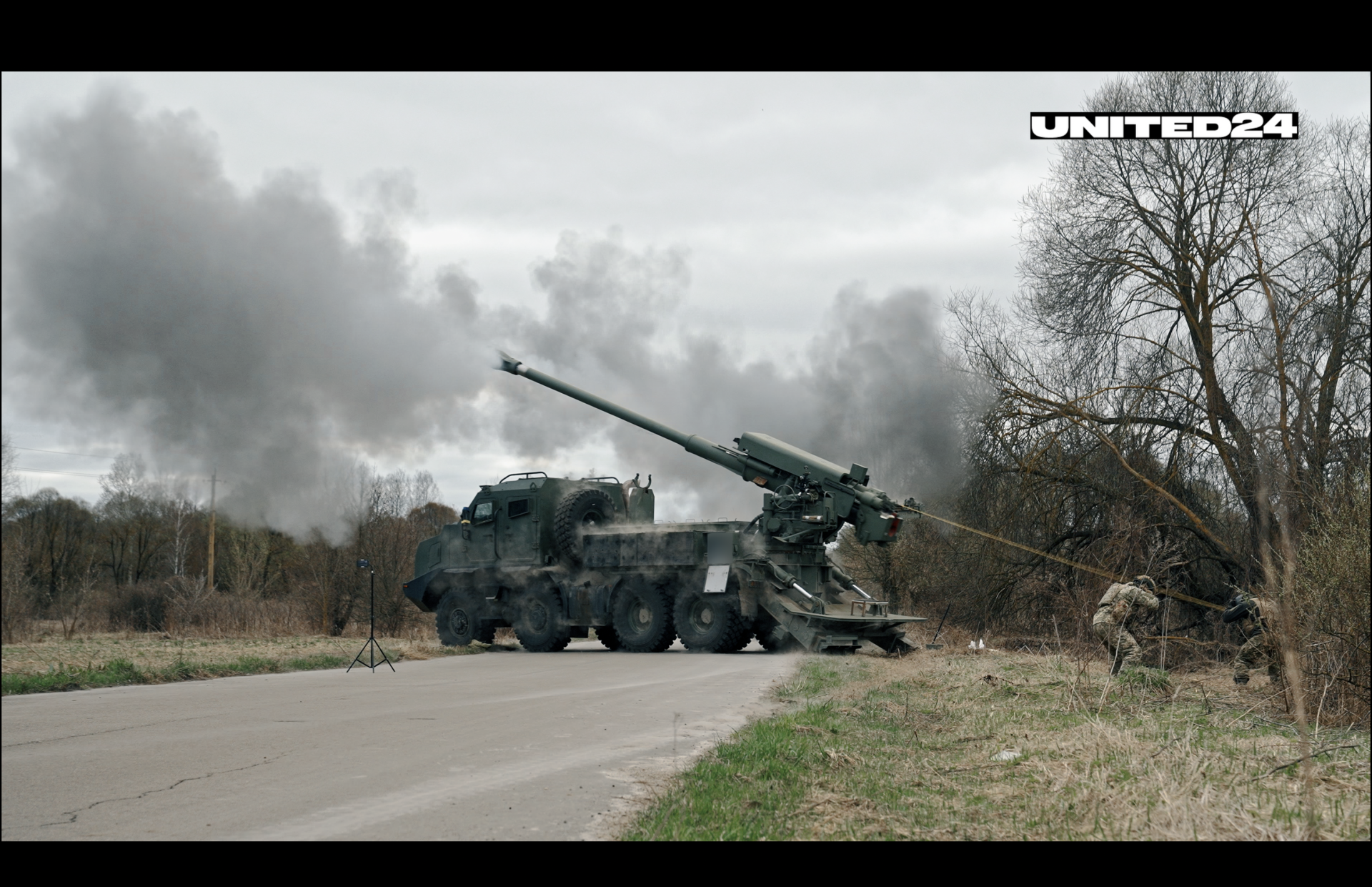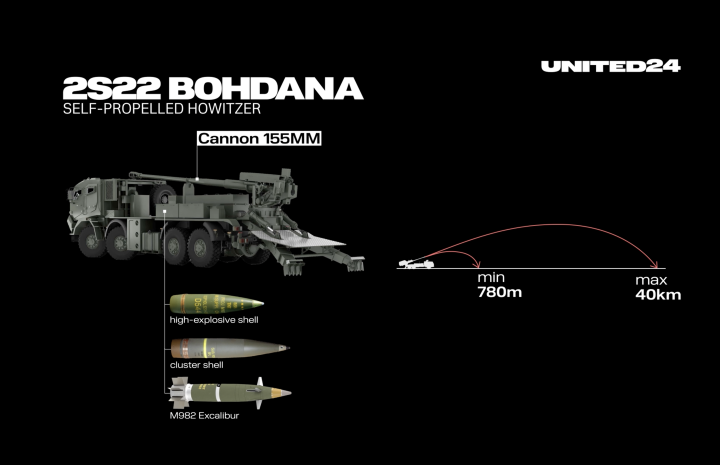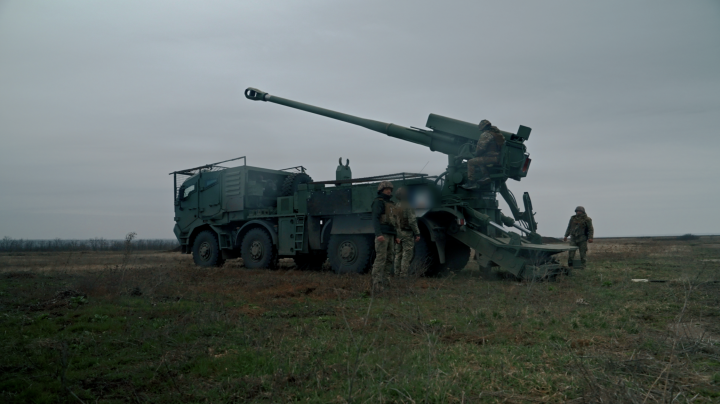- Category
- War in Ukraine
Ukraine Produces 10 Bohdana Self-Propelled Artillery Units Monthly. Here’s What We Know About Them

Ukraine has started producing its own Bohdana self-propelled artillery units (SAU), which will reduce its dependence on foreign partners. Here’s all you need to know about them.
In April 2024, Volodymyr Zelenskyy announced that Ukraine will be able to produce 10 Bohdana self-propelled artillery units (SAU) per month and even more in the following months. This is a significant development, considering Ukraine only had one unit at the beginning of the full-scale invasion.
According to current estimates, Ukrainian weapons production will be able to assemble over a hundred Bohdana units per year. These are significant results: few countries in the world have their own self-propelled artillery unit and are capable of producing them in such quantities on an ongoing basis.
Continuity is the key indicator. In Europe, only one country can compare—France with its CAESERs. These SAUs were transferred as military aid from several European countries for use in Ukraine. In April, representatives of the French defense sector announced that they plan to increase production to 12 units per month.
Here, we examine Bohdana's capabilities and explain why it is vital for Ukraine to have its own self-propelled artillery units.
Technical capabilities
The most important feature of the Bohdana SAU is the caliber of its ammunition. Instead of the old 152 mm caliber, the new product has a 155 mm one. This indicates a transition to a new ammunition standard common to all NATO countries, including the US. It means that Ukraine will no longer be dependent on old Soviet-era shells but will be able to use those from Western partners and converge with them on a single standard of weapons—crucial for long-term wars.
Its firing range is about 42 km. When it comes to more powerful rocket rounds, the range can increase to 60 km. It can fire up to 4-6 rounds per minute, but the engineers promise to refine this characteristic and expand it to 7 rounds per minute. The ammunition supply is 20 shells.
The crew of the Bohdana consists of 5 people. Its speed is up to 30 km/h off-road and up to 80 km/h on a regular road. Its cruising range is up to 800 km.

A vital feature of the Bohdana is its ability to work on different chassis. In particular, the artillery unit has already been tested on three distinct platforms: two were six-wheeled, and one was an eight-wheeled Tatra from a Czech manufacturer. Such adaptability avoids dependence on one manufacturer and allows for a steady production rate because the installation is mounted on whatever platform is available. This is an essential feature for Ukraine at a critical moment of the war.
The only drawback of the Bohdana that Ukrainian military personnel are paying attention to today is its lack of automatic loading. Most of the actions have to be done by the military manually. But this system has already been planned at the design stage, so will be installed in the future.
Why Ukraine needs its own SAU
Almost all of the described characteristics are comparable to what the French CAESAR is capable of—a 155 mm projectile and a firing range of 42 km. The advantages of the French CEASARs are still its automatic ammunition supply, unified chassis, lighter weight, and more combat experience—which makes it a more sophisticated product. But there are also some drawbacks.
Firstly, you have to wait for the CAESARs. France, Denmark, and other European countries have already transferred all their available stocks to Ukraine, dramatically strengthening Ukraine's capabilities. However, the scale of production is not enough to meet the needs of the Ukrainian frontlines today: artillery warfare requires not only a lot of shells but also howitzers.
Secondly, the repair base and knowledge present a crucial limitation: in the case of complex damage, you have to send the CEASARs to neighboring countries. CAESARs are also more innovative; their repair is more complicated and therefore often takes longer.
Finally, the French SAU is more expensive. According to insiders, one CAESAR costs about $5 million, while the Ukrainian Bohdana is twice as cheap.
Having its own SAU would allow Ukraine to cover several gaps at once:
Reduce dependence on manufacturers in other countries.
Place orders with local contractors to keep funds within the country. Long-term contracts allow companies to create jobs and keep a significant part of the country's funds.
Increase the SAU’s export potential.
Develop a scientific base for this track.
Carry out faster repairs within Ukraine.
Ukraine is considering further developing the Bohdana by converting the self-propelled artillery unit into a simple artillery unit. Abandoning the chassis will allow for maintaining high production rates when no free chassis are available. In addition, the engineers of the Kramatorsk Heavy Machine Tool Plant, who developed the Bohdana, are constantly working on improving it to make it more effective on the battlefield.

Creating a powerful assembly line to produce Ukraine’s own Bohdana SAUs will allow the country to reduce its dependence on partners.
This is also important: European countries are actively rearming themselves, and therefore, France has many orders for CAESARs—even without Ukraine. With the Bohdana, Ukraine's dependence will shift to ensuring sufficient shells. However, having the same caliber as NATO countries will simplify this task.
7 years in the making
The development of the Bohdana began in 2015, on the initiative of the Ministry of Defense of Ukraine–a year after Russia started its war against Ukraine. Creating new weapons is a difficult task, especially when it comes to artillery–but Ukraine took the challenge on.
Why? A self-propelled artillery unit is subjected to significant impact during each shot, which all its systems must withstand—starting from the chassis and ending with the electronics in the cabin. However, the biggest challenge is regarding the barrel: it is made of high-quality metals and meticulously carved using high-precision tools. That’s why many say that Russia depends on Western suppliers to produce its own barrels—needing Western-made CNC machines to carve metal. This is an exceptionally technologically complex artillery component. A low-quality barrel will quickly fail and will not be able to provide an accurate shot.

Ukraine has invested significant time and resources in the development of the barrel and other systems. The first Bohdana unit was presented to the public in 2018 and subsequently underwent field tests.
Serial production of the SAU began in 2022, but due to several difficulties, the process took time to gain momentum. The active assembly of Bohdana started in 2023, with several units being produced each month. The progress is significant: in December 2023, the production rate was six units per month; in March 2024 - 8 units per month; and since April - 10 units per month.
The path to the finished product took seven years, and to a whole assembly line - 9 years. For comparison, the CAESAR system was brought into development in 1994 and adopted into service 13 years later, in 2007.
What next?
The Bohdana self-propelled artillery unit is an example of how Ukraine created its own effective weapon and organized everything correctly. Long-term contracts were signed in the spring of 2022, and since then, the Ukrainian leadership and the Ministry of Defense have done their utmost to ensure that the Bohdanas are manufactured without delays. As a result, the Bohdana initially helped to liberate Snake Island, and today it is working on various sections of the front, repelling the advances of Russian troops.
-29a1a43aba23f9bb779a1ac8b98d2121.jpeg)
-6359eca46c72bde40a90abaaadd6eaa8.png)


-206008aed5f329e86c52788e3e423f23.jpg)
